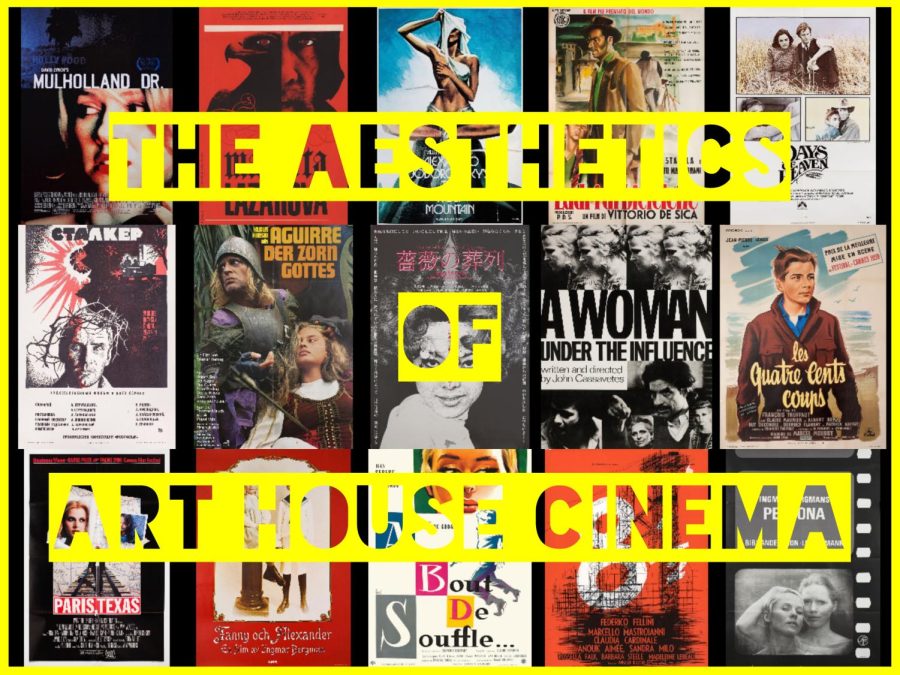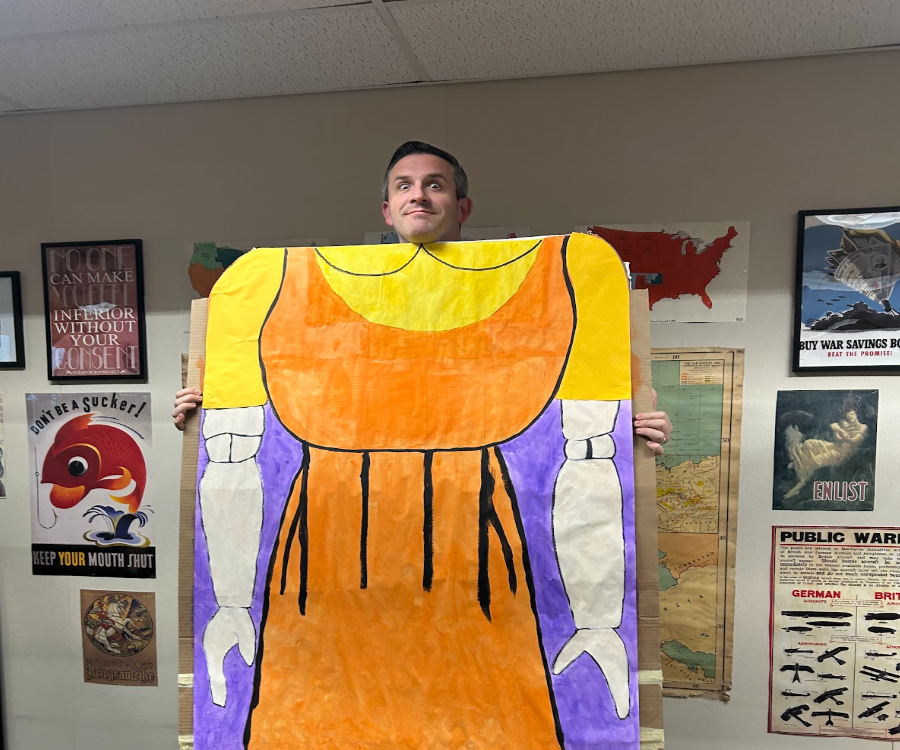The Aesthetics of Art House Films: What Sets Them Apart – Part 1
March 8, 2023
Cinema is an art form that enthralls the senses and transports spectators to realms beyond our wildest fantasies. It is a narrative medium that mixes the magic of music, sound, and sights to create a one-of-a-kind and unforgettable experience. From the earliest flickering pictures of the Lumière brothers to today’s epic blockbusters, cinema has evolved into an intricate and sophisticated artistry that celebrates the human condition and the richness of our world. It is a blank canvas on which filmmakers, actors, writers, and artists can create masterpieces that inspire, enlighten, and amuse. We may travel across time, visit other cultures, and develop a better comprehension of ourselves as well as the world around us through the enchanted medium of film.
While mainstream cinema typically caters to a broad audience, art house cinema serves as a more niche category of films. Art house films are distinguished by their distinctive approaches to storytelling, avant-garde imagery, and unorthodox ideas. Because such films are not constrained by the monetary restrictions of the mainstream film industry, filmmakers are empowered to experiment with innovative ideas and push the boundaries of cinematic art. Art house films may be challenging, thought-provoking, and sometimes controversial, yet they contrast the conventional blockbusters. They allow audiences to experience cinema as a genuine art form, one that may question our assumptions, broaden our views, and provide unique insights into the human condition.
The origins of art films can be traced back to the beginning of the 20th century, when resistance to the commercialism of Hollywood and other mainstream film industries gave rise to art house cinema, often called independent or avant-garde cinema. The movement originated in Europe, with filmmakers including Jean Cocteau, Luis Buñuel, and Sergei Eisenstein creating experimental films that engaged with novel approaches to narrative and visual expression.
The advent of German expressionism, Soviet montage, Cinema Pur, and French poetic realism ushered in the first art house films in the 1920s and 1930s. These movements emphasized nonlinear storylines, dreamy imagery, and symbolic themes to create a far more abstract and surrealistic form of storytelling. However, films were not classified as “art films” in the 1920s and 1930s, and most directors did not set out to produce them. Yet, numerous films, such as Carl Theodor Dreyer’s “The Passion of Joan of Arc” and “Vampyr” have complex artistic ambitions. Among some of the films that stood out from the mainstream at the period were “Sunrise: A Song of Two Humans,” “The Rules of the Game,” “Brief Encounter,” and “The Red Shoes.” F.W. Murnau’s “Nosferatu,” Jean Cocteau’s “Beauty and the Beast,” and Luis Buñuel’s “Un Chien Andalou” were among the most notable films around this time. Among other films of this period, “Battleship Potemkin” was a revolutionary propaganda picture that Eisenstein used to test his theory regarding how to use cinematic editing to evoke the most emotive reaction from an audience.
The late 1950s and 1960s gave way to the era of the French New Wave, a movement spearheaded by directors such as Jean-Luc Godard, François Truffaut, and Alain Resnais who abandoned traditional filmmaking norms in favor of a more spontaneous and improvisational methodology. Michelangelo Antonioni, Ingmar Bergman, and Federico Fellini were other influential directors during this period. Jean-Luc Godard used innovative visual and editing techniques in “À bout de souffle” (Breathless), which he continued in films such as “Contempt” and “Pierrot le fou.” François Truffaut’s “Jules et Jim” used innovative screenwriting, editing, and camera techniques to explore a complex relationship of three individuals. Michelangelo Antonioni, Ingmar Bergman, and Federico Fellini were other influential directors during this time. Michelangelo Antonioni’s films such as “L’Avventura,” “La Notte,” “Eclipse,” “Red Desert,” and “Blowup” revolutionized filmmaking with their landscape photography, framing techniques, and examination of perception and reality. Ingmar Bergman’s “Winter Light” and “The Silence” dealt with themes such as emotional isolation and a lack of communication, while “Persona,” “Shame,” and “A Passion” explored the idea of film as an artifice. Tadeusz Konwicki’s films such as” All Souls’ Day” and “Salto” inspired discussions about war and raised existential questions for their everyman protagonists. “La Dolce Vita” connected Federico Fellini’s previous Italian neorealist approach with his future surrealism style, while “8 ½” highlighted artistic, marital, and spiritual dilemmas. “Last Year at Marienbad” by Alain Resnais featured large tracking shots to probe perception and reality, whereas “Au Hasard Balthazar” and “Mouchette” by Robert Bresson embraced a realistic, elliptical technique. “Last Year at Marienbad” by Alain Resnais featured large tracking shots to probe perception and reality, whereas “Au Hasard Balthazar” and “Mouchette” by Robert Bresson embraced a realistic, elliptical technique. Many other well-known films from the 1950s contain aesthetic sensibilities, including “La Strada”, “Ordet”, “Nights of Cabiria”, “Wild Strawberries”, and the “400 Blows.” Conversely, in India, a parallel cinema movement created internationally acclaimed films such as The Apu Trilogy. Japanese filmmakers produced unconventional films like “Rashomon,” “Ikiru,” “Tokyo Story,” “Seven Samurai,” “Fires on the Plain,” and “Ugetsu.”
The French New Wave movement persisted through the 1960s and into the 1970s, and the term “art film” garnered much more traction in the United States than in Europe. In the United States, the term “art film” has come to refer to a diverse spectrum of films, including foreign language “auteur” films, independent films, experimental films, documentaries, and short films. Throughout the 1960s, the name was associated with risqué Italian and French B-movies, but in the 1970s, it was applied to sexually explicit European films with esthetical structure, such as the Swedish film “I Am Curious” (Yellow). In the United States, the phrase has been applied to films created by contemporary American artists, such as Andy Warhol’s 1969 film Blue Movie, as well as a broad swath of films presented in repertory theaters or “art house cinemas.” Andrei Tarkovsky’s “Andrei Rublev” explored artistic freedom and the need to create art in the face of repressive authority, while Stanley Kubrick’s “2001: A Space Odyssey” impressed audiences with its scientific realism, innovative special effects, and striking visual imagery. Meanwhile, Sergei Parajanov’s “The Color of Pomegranates” was banned by Soviet authorities and praised by critics.
Filmmakers pushed the boundaries with bold and contemplative films in the early 1970s. “A Clockwork Orange” from Stanley Kubrick and “Last Tango in Paris” by Bernardo Bertolucci both stunned audiences with all its violent and sexually graphic material. However, Andrei Tarkovsky’s “Solaris,” viewed as a Soviet response to 2001, adopted a more contemplative approach to science fiction. Tarkovsky’s subsequent films, “The Mirror” and “Stalker,” received international praise. Tarkovsky’s penchant for prolonged, pensive images of natural beauty and poetic narration was also shared by Terrence Malick’s “Badlands” and “Days of Heaven.” During the same time, a renaissance of unconventional imagery and characters took place on the silver screen. Filmmakers like Werner Herzog and Alejandro Jodorowsky contributed to this artistic wave with their striking and psychedelic works, such as “Aguirre, the Wrath of God” and “The Holy Mountain,” respectively. Martin Scorsese’s “Taxi Driver” continued this exploration of society’s decay and disconnection, which was first broached in “A Clockwork Orange.” In contrast, David Lynch’s “Eraserhead” offered a surreal, dreamlike interpretation of industrial life. Additionally, John Cassavetes’ “A Woman Under the Influence” provided a biting commentary on the struggles of blue-collar Americans, featuring an eccentric housewife’s slow descent into madness. Furthermore, the 1970s saw the rise of adult art films, including the surreal “Barbara Broadcast” directed by Radley Metzger and “The Opening of Misty Beethoven.” This age of cinema began with Andy Warhol’s “Blue Movie” and saw adult erotic films gain mainstream recognition and critical acclaim. Renowned celebrities openly discussed these films, which were taken seriously by influential film critics like Roger Ebert.
In the 1980s and 1990s, the term “art film” and “independent film” in the United States started to become interchangeable, as both shared similar stylistic traits. This happened due to a range of factors, including the rise of independent filmmakers interested in creating more challenging and experimental works outside the mainstream Hollywood system. The 1980s saw a shift in the cinematic landscape, as some directors moved away from the escapist blockbusters of Steven Spielberg and George Lucas and instead explored themes of gritty realism, philosophy, and surrealism. Martin Scorsese’s “Raging Bull” displayed Robert De Niro’s extreme method acting, portraying a boxer’s decline, while Ridley Scott’s “Blade Runner” delved into existentialism and the definition of humanity. Other directors, like Akira Kurosawa and Sergio Leone, juxtaposed brutal violence with emotional substance, while Andrzej Wajda and Krzysztof Kieślowski explored philosophical and ethical issues in their works. In 1982, experimental director Godfrey Reggio released the surprise arthouse hit Koyaanisqatsi, a film without dialogue, which emphasizes cinematography and philosophical ideology about technology and the environment. Another approach used by directors in the 1980s was to create bizarre, surreal alternative worlds. Martin Scorsese’s “After Hours” is a comedy-thriller that depicts a man’s baffling adventures in a surreal nighttime world of chance encounters with mysterious characters. David Lynch’s “Blue Velvet,” a film noir-style thriller-mystery filled with symbolism and metaphors about polarized worlds and inhabited by distorted characters who are hidden in the seedy underbelly of a small city, became surprisingly successful considering its highly disturbing subject matter. Peter Greenaway’s “The Cook, the Thief, His Wife & Her Lover” is a fantasy/black comedy about cannibalism and extreme violence with intellectual theme: a critique of “elite culture” in Thatcherian Britain. Meanwhile, Wim Wenders and Ingmar Bergman blurred the line between cinema and television, and Patrick Bokanowski’s “The Angel” was considered the beginning of contemporary animation. Taiwanese director Hou Hsiao-hsien’s “A City of Sadness” also marked a milestone for the Taiwanese New Wave, depicting realistic life in Taiwan.
The 1990s saw directors tackle philosophical topics such as identity, chance, death, and nihilism. Identity and the desire for belonging were explored in Gus van Sant’s “My Own Private Idaho” and Wong Kar-Wai’s “Chungking Express,” for example. “The Double Life of Véronique” by Krzysztof Kieslowski is a drama about identity and the East/West divide in Europe, whereas Darren Aronofsky’s “Pi” is an ambiguous picture about a neurotic mathematician’s search for peace. “The Cremaster Cycle” by Matthew Barney is a self-contained aesthetic system that explores the process of creation through allusions to reproductive organs, mythology, and geology. Several films from the 1990s combine an ethereal or surreal visual environment with philosophical themes. “Sátántangó” by Béla Tarr, for example, is a 7 ½ black-and-white film which follows a group of villagers as they anticipate the arrival of a charismatic and enigmatic leader who promises to bring salvation to their bleak and desolate lives. Released in 2007, Andrew Dominik’s genre-defying western “The Assassination of Jesse James by the Coward Robert Ford” digs into the protagonist’s deteriorating mental state as he becomes increasingly paranoid and develops a precarious bond with his eventual killer. “Uncle Boonmee Who Can Remember His Previous Lives,” directed by Apichatpong Weerasethakul, won the Palme d’Or at Cannes, weaving together gorgeously filmed sequences with reflections on love, sorrow, and retribution. Terrence Malick’s “The Tree of Life,” Lars von Trier’s “Melancholia,” and Jonathan Glazer’s “Under the Skin” are among the other prominent arthouse films of the past couple of decades.
Now that we have explored the development of art house films over time, it is important to consider what defines a film as “art house.” While there is no one-size-fits-all answer to this question, there are certain characteristics and features associated with this genre. By understanding these qualities, we can gain a better appreciation for the unique and often challenging films that fall under the umbrella of art house cinema.
One of the main characteristics of art-house films is their visual style. Unlike mainstream films, which often employ glossy visuals and highly polished editing, art house films often have a raw, unpolished look. These films may have a more naturalistic approach to lighting, with scenes lit by available light rather than artificial sources. Handheld cameras are also common, giving the films a more intimate, documentary-style feel. Additionally, art house films may employ unconventional camera angles and framing, which can create a sense of disorientation and unease.
For example, “Days of Heaven,” director Terrence Malick, is characterized by a naturalistic approach to lighting and cinematography that conveys a sense of intimacy and realism. The way that the characters are framed against vast, open landscapes that suggest isolation and loneliness are reminiscent of American realist painters Edward Hopper and Andrew Wyeth.
Another aspect of the aesthetics of art house films is their storytelling. These films often eschew conventional narrative structures and linear storytelling. Instead, they may use non-linear storytelling, flashbacks, and dream sequences. Art house films often have a more contemplative pace, with long takes and extended scenes that let the audience focus on the characters and their emotions. The characters in art house films are often complex and flawed, and the films may delve into existential and philosophical themes.
One such film that falls in line with this description is Jean-Luc Godard’s “Breathless,” what sets this film apart is its use of a non-linear narrative structure. The film begins in medias res, with a scene of the protagonist Michel stealing a car and killing a police officer. From there, the film jumps back and forth in time, showing Michel’s interactions with his girlfriend Patricia and his attempts to evade the police. This approach creates a fragmented and disorienting narrative, which mirrors Michel’s own sense of detachment from the world around him.
Sound is also an important aspect of art house films. Unlike mainstream films, which often use a score or soundtrack to enhance the emotions of the scene, art house films may employ more naturalistic sound design. This can include ambient sounds, such as the rustling of leaves or the hum of a city, which can create a sense of atmosphere and mood. Dialogue may be sparse, and when it is used, it may be delivered in a more naturalistic way, without the heightened emotions of mainstream films.
Roma, directed by Alfonso Cuarón, is a perfect example of an art house film that stands out due to its use of sound. One of the most notable aspects of Roma’s sound design is its emphasis on ambient sounds. The film’s opening sequence features a long shot of a tiled floor being washed, and the sounds of the soapy water, brush, and tiles create a meditative atmosphere that immediately draws the viewer into the film’s world.
Finally, art-house films are often produced by filmmakers from different countries exploring their culture and identity. Additionally, these films may be more politically and socially engaging, addressing issues such as gender, race, and class.
The Three Colors trilogy, consisting of the films Blue, White, and Red are themed on the French Revolutionary ideals of liberty, equality, and fraternity. Directed by Krzysztof Kieślowski, they each stand out as art house films in several ways. The films explore various cultural identities, including Polish, French, and Swiss, and examine the themes of individuality and interconnectedness across national and cultural boundaries. Blue explores themes of grief and trauma through the story of a woman struggling to come to terms with the loss of her husband and child in a car accident. White delves into issues of economic disparity and social mobility, as it follows a Polish immigrant in France who seeks revenge against his ex-wife after their divorce leaves him destitute. Finally, Red deals with themes of fraternity, as it tells the story of a young model who becomes involved in the lives of two men whose paths cross in unexpected ways.
To conclude, art house films have come a long way since their inception in the early twentieth century. These works began as a collaboration between like minded individuals and a desire to create something more profound and imaginative. Art house films have developed and broadened over time, resulting in an exciting and multifaceted cinematic form. Art house films are recognized today for their distinct visual aesthetics, unorthodox narrative structures, and unique storytelling. They continue to push cinema’s limits and encourage audiences to engage with film in interesting ways. In the next section, we will look into particular instances of art house films which have had a lasting impact on the industry. To understand further about what makes art house films so compelling and relevant for moviegoers today, we must delve into their themes, aesthetics, and cultural relevance.




